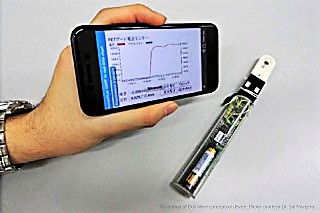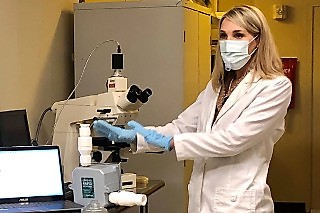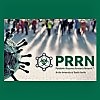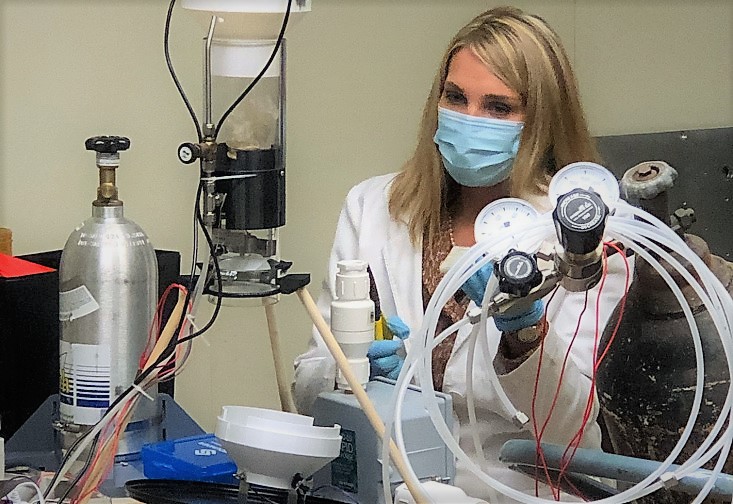The project, funded by USF’s COVID-19 Rapid Response Grants in early days of the pandemic, reaches a new milestone in its development.
TAMPA, Fla. (July 21, 2021) – Two new journal articles published by a team led by USF College of Engineering researchers establishes the ability of the “Bull Nose” device to detect COVID-19 in the exhaled breath of infected people, moving the invention another step forward in its quest to become a quick and inexpensive way to test for the disease.
Publishing in the journal Neuroimmunology and Neuroinflammation and IEEE Sensor Journal, a publication of the Institute of Electrical and Electronics Engineers, the research team led by USF Engineering Professor Sal Morgera said the biochemistry of the disease is critical in developing an electronic diagnostic tool that functions as a “nose” to detect the unique mixture of volatile organic compounds produced by the SARS-CoV-2 virus as it infects the human body and develops into the disease COVID-19.

The Bull Nose concept device is envisioned to be portable, quick and inexpensive.
The goal of the project, funded through last year’s USF COVID-19 Rapid Response grant program, is to investigate whether an electronic nose can provide an alternative to the massive shortages of testing equipment and the slow turnaround time on tests which rely on identifying the genetic presence of the virus.
Those early testing shortages and delays allowed COVID-19 to spread around the world unchecked for months. More than a year after the pandemic, testing remain a costly and burdensome means of fighting the virus even as supplies and turn-around times have improved. The team envisions their project as being capable of providing easily accessible testing at pharmacies and clinics with patients able to receive near-immediate diagnoses.
The peer-reviewed publications are an important step in moving the patent-pending innovation toward further research and development. The project also is among the 16 USF research projects which received support from the Florida High Tech Corridor Council, which provided $300,000 to support new technologies to fight COVID-19 and move them quickly from lab to market.
The research team includes USF Engineering PhD alum Dr. Tiffany Miller, Dr. Morgera, Engineering Professor Stephen Saddow, Engineering Associate Professor Arash Takshi, Muma College of Business Professor Matthew Mullarkey, and Matthew Palm of Valhall K-9 International. Valhall is an international leader in training detection dogs that has joined the project as a corporate partner to explore the application of the emerging technology to help scent dogs detect the disease.

The Bull Nose device measures specific volatile organic compounds produced by COVID-19.
In Neuroimmunology and Neuroinflammation, the team reported that electronic noses have been shown to successfully recognize complex volatile organic compound (VOC) mixtures produced from the metabolic processes of diseases. Electronic nose technologies are currently being tested in clinical trials for a wide range of diseases, as well as in monitoring air quality, spoiled meats and even ripening fruit.
“Electronic nose technology configured to detect exhaled VOC biomarkers from a breath sample have been observed as a successful approach to a non-invasive diagnosis demonstrated in clinical trials for breast cancer, colorectal cancer, lung cancer, liver disease, infectious disease such as influenza, and inflammatory lung disease,” the research team wrote.
Due to their portability, ability to rapidly provide point-of-care diagnostic test results without a laboratory technician, and their low cost, electronic noses an ideal diagnostic tool. And when it comes to cost, the team said, the device is especially attractive: The electrical components, chemical gas sensor, microcontroller and wiring that make up the electronic nose costs less than $15 in parts.
Read Neurological connections and endogenous biochemistry - potentially useful in electronic-nose diagnostics for coronavirus diseases.
In the IEEE Sensor Journal, the team laid out the design of their electronic node specifically configured to detect the concentration of COVID-19. They used a breath simulation, pre-heated mixture of alcohol, acetone and carbon monoxide to determine the suitability of the sensors for application in exhaled breath analysis.
The COVID-19 breath simulation sample was established and validated based on preliminary data obtained from parallel COVID-19 breath studies from research institutes based in Edinburgh, Scotland, and Dortmund, Germany, the team wrote.
Read Electronic Nose With Detection Method for Alcohol, Acetone, and Carbon Monoxide in Coronavirus Disease 2019 Breath Simulation Model.
 Learn more about USF's Pandemic Response Research Network.
Learn more about USF's Pandemic Response Research Network.

